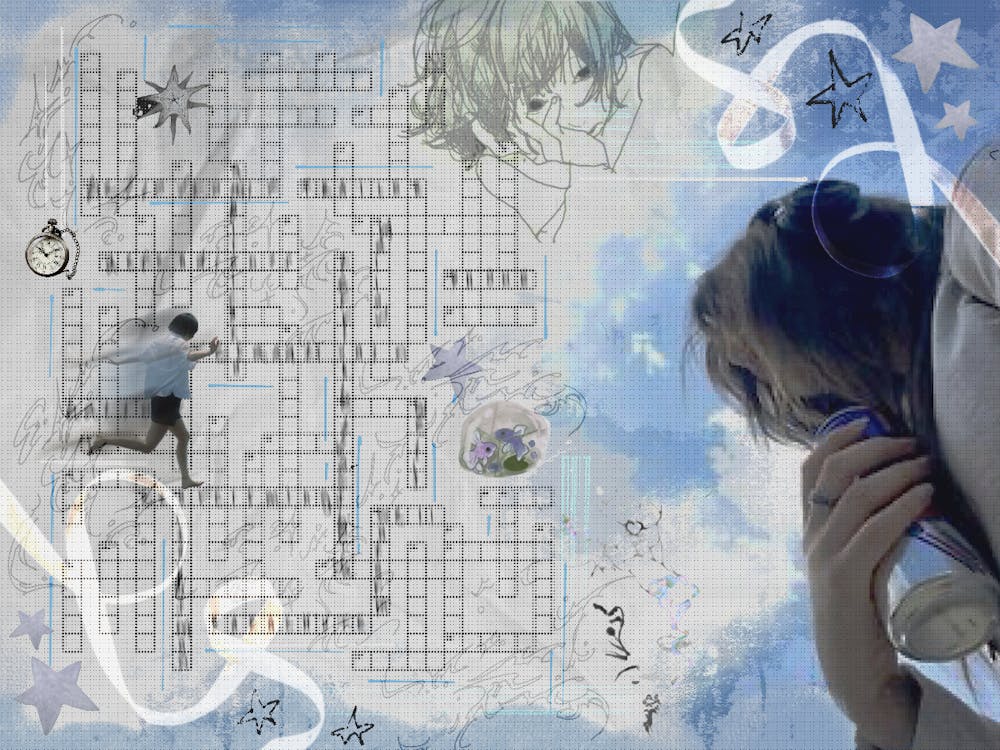It’s possible to find comfort in something intended to be perplexing. Filling out the symmetrical 15x15 crossword puzzle grid is a joy often experienced in the tranquility of a hammock or a cozy corner on the sofa, accompanied by a warm mug of tea. The clues, riddled with cryptic questions and demanding wordplay, offer a distinctly delicious satisfaction when solved. A small triumph with each answer.
At first glance, the empty grid is daunting. Next to it, a long list of clues designed to mislead await the solver. Yet the rhythm of the process is captivating. As patterns emerge and connections are made, the once-daunting puzzle takes shape with each solved clue. The experience is both a test of knowledge and a playful exercise in lateral thinking.
The solver is patient, trusting that the labyrinth of complex clues will come together seamlessly after a bit of mental work and persistence. The clues are clever and often obscure, relying on outside-the-box thinking, arbitrary historical tidbits, and recognition of specific linguistic patterns. And every solver will finish a puzzle having learned something they did not know before. Oftentimes these new pieces of knowledge are trivial facts, like the number of keys on a piano or the longest-running Broadway musical. Other times they may be more pragmatic, like capital cities or parts of the human body.
Crossword puzzles have a history of being a meditative practice. The debut puzzle, published in the New York World in 1913, came out as World War I loomed on the horizon. With one grim headline after another, the crossword was a small pocket of peace among the chaos. The puzzles quickly gained traction. The New York Times, previously committed to never combining games with news (a stance it has now famously reversed), began to publish crosswords for the same reason. The troubled state of the world brought about a plague of news fatigue—a source of relief was necessary.
Now, it’s impossible to sit in the back of a lecture hall without seeing a dozen screens doing the daily crossword puzzle. Perhaps this is an indication of boredom, or a need for little victories in overwhelming moments. With the skyrocketing craze of the online puzzle, it’s become a timeless tradition that blends challenge and comfort.
~ ~ ~
A question mark within a crossword clue sometimes signals inventive wordplay, sometimes a dad joke, but usually a divergence from the clue's literal meaning. For instance, the clue “Mobile home?” is not answered by TRAILER, but rather by PHONE CASE. Similarly, an astute solver will decode the clue “Fall accessory?” to PARACHUTE. It’s an unparalleled feeling to solve clues like these, whether on a lazy Sunday morning in bed or during a break from a seemingly endless study session in the library. Regardless of the setting, filling in the grid evokes a gratifying sense of fulfillment with every clue.
These types of clues—in which the answer doesn’t immediately come to mind—fortify the thrill of solving a crossword. The lightbulb moment when deciphering these clues is a delightful, difficult-to-replicate feeling, a moment in which the solver marvels at both the creator’s skillfulness and their own ability to see past a red herring.
There’s something else even more exhilarating than solving individual clues. Some puzzles have an overarching theme that ties a few clues together seamlessly. These additional layers of cleverness can take many forms: playing with the shape of the grid, the word form in the answer, the number of letters in each box, and so on. A famous example came from Isabel Walcott’s May 10, 1997 puzzle, in which the overarching theme was "No ifs, ands, or buts." So BUTCHERKNIFE became CHERKNE (with the letters IF and BUT removed), and the answer PEANUTBUTTERSANDWICH became PEANUTTERSWICH (the letters BUT and AND removed).
These themes showcase not only the artistry and originality of the creator, but also the effort put into creating memorable moments for solvers. Deciphering a good theme is akin to the thrill of discovering a movie’s unexpected plot twist, impossible to predict but making perfect sense once revealed.
~ ~ ~
Stress of any kind requires relief. Often this takes the form of a television show, exercise, a comfort meal, or perhaps an artistic activity like knitting or painting. It is imperative to seek methods that relax the brain and soothe the soul, as a way to unwind after a grueling week or perhaps to quell jitters before an upcoming exam or interview. Crosswords offer this relief in a special way, as a solver reaps the benefits of a mindless activity while exercising the mind. It’s meditative to immerse oneself in problems that are solvable—especially in a world so often overwhelmed by complexities that lack clear solutions.
You, the solver, have a small but meaningful sense of control, knowing the answer is within reach.
Samira Lakhiani has been a staff writer for post- since 2021. She is a senior from Cumberland, Rhode Island and studies neuroscience.





